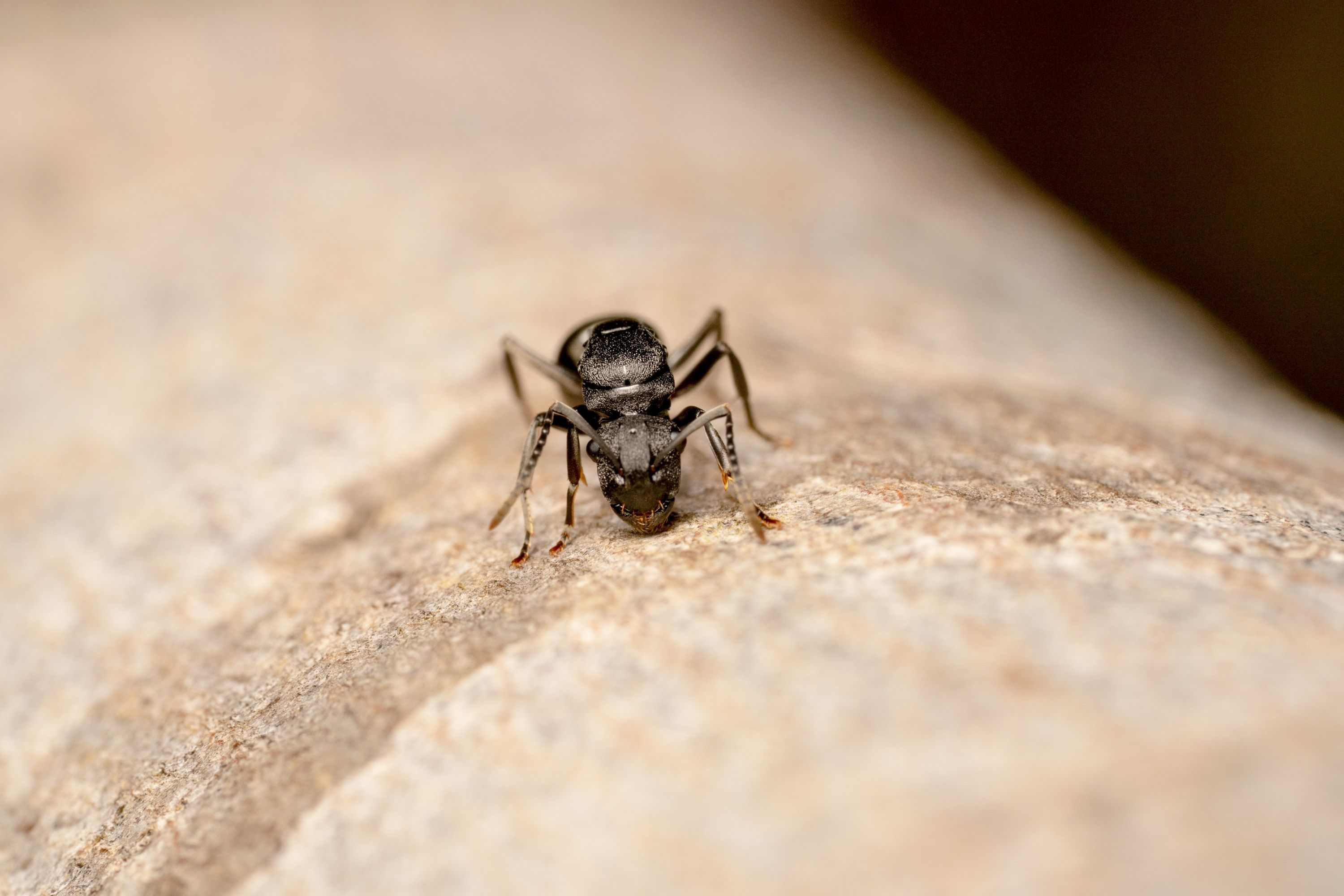Silky ant
(Formica fusca)

Description
Formica fusca is a black-colored ant commonly found throughout Europe as well as parts of Southern Asia and Africa. It has the common names silky ant or dusky ant. The range within the palaearctic region extends from Portugal in the west to Japan in the east and from Italy in the south to Fennoscandia in the north. Populations from North America have been split off as a separate species, Formica subaenescens. F. fusca nests are usually found in rotten tree stumps or under stones in clearcut areas and along woodland borders and hedgerows. Colonies are facultatively polygynous (though weakly so); though the queens coexist amicably, contribution to the brood tends to be unequal. Nests are usually small, containing 500-2,000 workers. The workers are large, at 8-10 millimetres (0.3-0.4 in) long, and fast moving, though timid. To ensure that non-nest mate eggs are not reared, these workers will engage in a process known as worker policing. Alate (winged) forms are produced in June/July and nuptial flights are in July/August. A study has found evidence of nepotism in F. fusca, in contrast with previous experiments with other ant species; this conclusion has been challenged, however, on the grounds that the observed pattern may result from differences in egg viability. F. fusca feeds on small insects such as codling moth larvae, aphid honeydew and extrafloral nectaries. Workers have been found to have a very high resistance to some pathogens and it is thought this may be due to F. fusca utilising the antibiotic properties of their formic acid, additional to the use of their metapleural gland. Formica is a genus of ants of the family Formicidae, commonly known as wood ants, mound ants, thatching ants, and field ants. Formica is the type genus of the Formicidae, and of the subfamily Formicinae. The type species of genus Formica is the European red wood ant Formica rufa. Ants of this genus tend to be between 4 and 8 mm long. As the name wood ant implies, many Formica species live in wooded areas where no shortage of material exists with which they can thatch their mounds (often called anthills). One shade-tolerant species is F. lugubris. However, sunlight is important to most Formica species, and colonies rarely survive for any considerable period in deeply shaded, dense woodland. The majority of species, especially outside the F. rufa species group, are inhabitants of more open woodlands or treeless grassland or shrubland.
Taxonomic tree:







